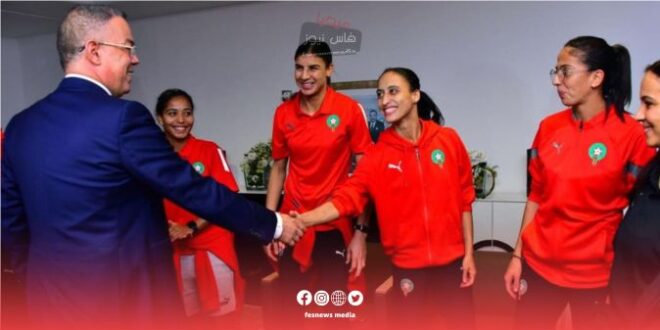In recent years, women’s football has seen remarkable development globally, gaining increasing attention from both the media and the public. This growing interest has been accompanied by several initiatives aimed at promoting greater female participation in this exciting sport, both at the club and national team levels. Among the most notable milestones for women’s football is the participation of women’s national teams in global tournaments such as the FIFA Women’s World Cup, which in its latest 2023 edition saw a significant improvement in performance quality and an increase in the number of participating teams.
But the question that arises today is: Will we witness greater participation of women’s teams in the 2030 World Cup? And what are the factors that could contribute to this?
An Increase in the Number of Participating Teams
The 2030 Women’s World Cup is expected to see an increase in the number of participating teams, especially given the continuous progress of women’s football around the world. In the 2023 edition of the Women’s World Cup, 32 teams participated for the first time—reflecting the sport’s significant expansion. Projections indicate that FIFA will continue to promote the expansion of international competitions, potentially increasing the number of teams in the near future as the game continues to grow in emerging regions such as Africa, Asia, and Latin America.
Investment in Women’s Football
FIFA’s investment, along with that of continental and local federations, is a key factor that will contribute to greater participation in the 2030 World Cup. By improving infrastructure and offering advanced training programs, the performance levels of national teams can be elevated, increasing competitiveness. In this context, many local tournaments in developed countries have seen major investments, which have helped improve player performance and uplift women’s national teams.
Moreover, major clubs in Europe and North America have started to show increasing interest in women’s football by supporting their women’s teams, as seen with clubs like Barcelona, Manchester United, and Paris Saint-Germain. Such club-level investment plays a crucial role in developing female players technically and physically, which in turn enhances their national teams’ competitiveness in global tournaments.
Increased Media and Public Attention
One of the most influential factors in the growth of women’s football is the rising interest from media outlets and fans. In recent years, media coverage of women’s football has expanded, contributing to its growing popularity. This has also translated into larger crowds attending matches, both at local and international levels. By raising public awareness and encouraging fan support, the demand for more matches and tournaments increases, thereby boosting opportunities for participation in global events like the World Cup.
The Growing Role of Local and International Federations
The expanding role of local and international football federations in supporting and developing women’s football is another fundamental factor for success. Many continental federations have created local and international competitions that encourage talent discovery and development. In countries like the United States, Germany, and France, women’s football has gained massive popularity, helping to create a competitive sports environment that aspires to global participation.
Challenges That May Arise
Despite all these positive developments, women’s football still faces several challenges that may hinder broader participation in the 2030 World Cup. Among the most pressing issues are cultural and traditional norms in some countries that restrict women’s sports, thereby limiting opportunities for girls to engage in football. Additionally, many national women’s teams suffer from a lack of financial resources and modern infrastructure compared to their male counterparts, which impacts their preparation for major tournaments.
The recent growth in women’s football marks a major step toward a brighter future for women in sports on a global scale. With increasing interest and investment in the sport, we are likely to see broader participation in the 2030 World Cup. While challenges remain, continuous support and the efforts of FIFA, local federations, and clubs pave the way for women’s football to reach higher levels of success and impact worldwide.
Source: Fes News Media
 فاس نيوز ميديا جريدة الكترونية جهوية تعنى بشؤون و أخبار جهة فاس مكناس – متجددة على مدار الساعة
فاس نيوز ميديا جريدة الكترونية جهوية تعنى بشؤون و أخبار جهة فاس مكناس – متجددة على مدار الساعة













